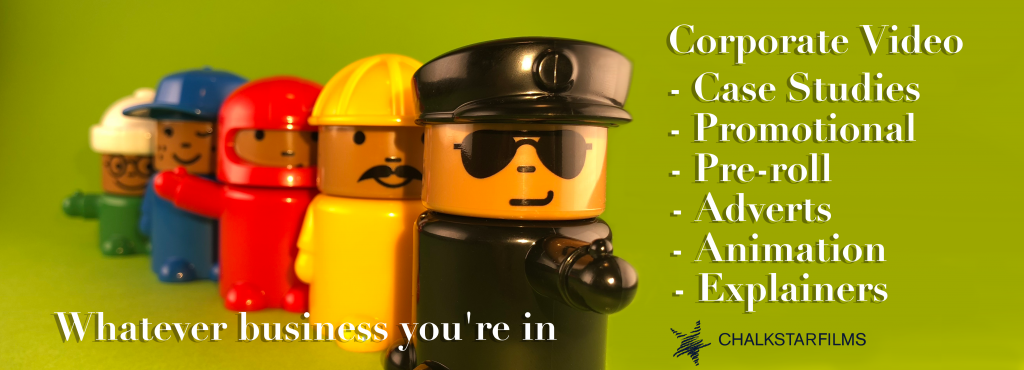Making the most from your video case study
A video case study is an excellent way to show customers how you have worked with clients in the past. Firstly the very fact that your customer is willing to commit to your promotion on film for the world to see is fantastic news. Its really good for new and existing customers to see how much other clients trust you. It really does add authenticity to you and your products or services. Rather then having to believe that you are as good as you say you are, you’ve got somebody that is reliably proving it.
Whats it all about then?
Before you begin putting together your video case study, it’s important that you understand exactly what problems your customers have, and how your product or service has solved it for them. Ensuring you get the most informative and persuasive video case study possible. The structure should be as follows.
- Identify the problem, problems or issues.
- Show how your product/services addresses this
- Conclude by showing how much better things are now
In other words your video case study is a three act thriller:
- Set up
- Journey
- Conclusion
Its important that you quantify each of the stages in a way that is engaging and relevant to the viewers and potential new clients. If it feels irrelevant for them, then they will not feel the need to engage you.
Its also vitally important that you really know what your product or service does. The reason that so many video case studies fail in their task is because of poor marketing. Research is key here, talk to your customers and listen to their stories. Not only will it make the case study better, you may find you learn more about yourselves then you thought possible.
Strategise. Once you have collated all this information, work out how best to use it. Agin, it is about relevance, the client you’re using is unique as are you, as is your prospective new client. Find the uniqueness and find the common thread. Make something that really does make people, customers… Businesses engage you, let them know that you will make their lives better.
It goes without saying that the video needs to be visually and audibly engaging. Your product or service isn’t cheap, so don’t let the video come across as cheap either. Give it the production value it deserves, make it easy to follow, entertaining where appropriate, human in essence and Profesional throughout.

How do we help?
Once engaged ChalkStar Films work with you and your client to make sure every step of the process is properly covered. We believe that we are more then an external company that is engaged for a job. We partner with you, learn about your company, your products and your ethos. Its only through this that we can fully understand what it is that you do. And when we fully understand you and your clients we can really make a great video case study for you.
The process
A typical production flow for a video case study is as follows:
- Pre Production
- Research
- Planning
- Organising
- Production
- Interviews
- B-Roll
- Post Production
- Assembly edit
- Graphics
- Colour Grade
- Audio Edit
- Score
- Round of unlimited changes from project assets
- Final Delivery
Take Advantage
You’ve invested time and money in the video case study, now take advantage of it. Promote it, send it to prospects, clients, agencies, newspapers, blogs, anywhere you can get it seen. Often companies fall short on promotion, sometimes delivery is when the hard work starts.
Get in touch
If you would like more information on how we can help you with a video case study or would like to discuss our services in more detail, then please get in touch. We are happy to have an initial consultancy with no obligation. Its good to talk.
Example Video Case Study
Westerings Primary Academy in Essex invested in Google Apps for Education, refreshed their old devices at no cost and removed their servers; saving them time and money and improving collaboration and learning experiences in a serverless environment.
